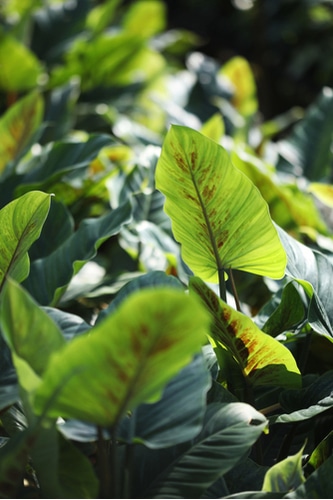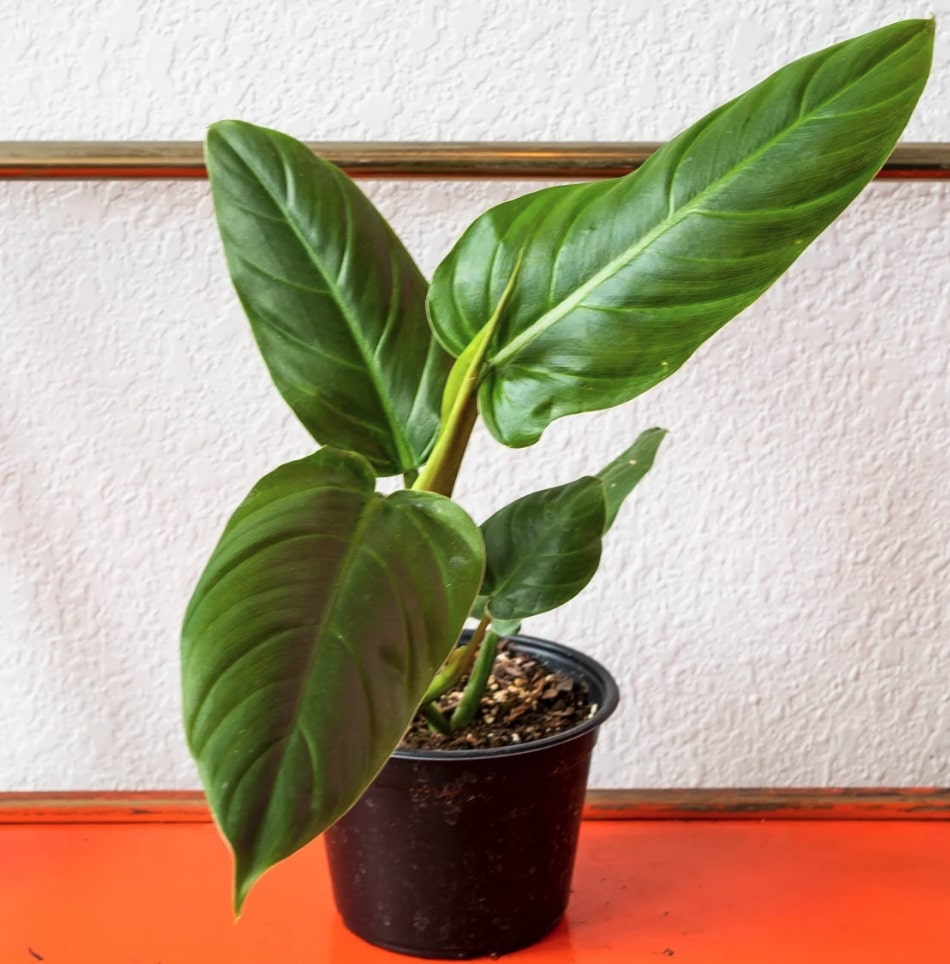Tropical plants are always a great addition to any home or office. They give the indoors a sense of life and can even help purify the area’s air. The Philodendron subhastatum is a beautiful tropical plant that’s native to Colombia, Venezuela, and Brazil. It can be grown outdoors in warmer regions across America (USDA zones 9 to 12).
Let’s look at how to grow and care for a Philodendron Subhastatum.
What is a Philodendron Subhastatum?
The Philodendron subhastatum is part of the Araceae family and can be found growing in the warmer temperatures of South America. They are an evergreen vine, meaning they typically have green leaves all year round.
This plant can grow up to six feet indoors with enough light, warmth, water, and fertilizer. Philodendron Subhastatum has large heart-shaped leaves that are usually 2 feet long or less. The leaves are attractive as they are dark green with red undersides. It’s worth noting that all species of philodendron are toxic to humans and animals if ingested.
How to Care for a Philodendron Subhastatum
Philodendrons are relatively easy to grow. They can be placed in almost any container that has adequate drainage and good sunlight exposure. These plants like moist, but not soggy soil. A partially shady location would be best, as the plants need enough sunlight for them to grow well. Here are some tips to help you care for a Philodendron Subhastatum:
Watering requirements
Philodendron subhastatum likes to have moist but not soggy soil. The best time to water a philodendron is in the mornings. Water should be poured until it begins seeping out of the bottom of the container. Let the topsoil dry out slightly between waterings, and always test the soil with your finger to see if your plant needs to be watered.
Sunlight needs
Philodendron subhastatum likes to receive filtered sunlight for at least six hours a day. It is best for them when they are in an area that gets some direct sunlight but still has many shadows among the leaves. If there is no filtered sunlight available, make sure to place these plants in a location where there will not be in any harsh sunlight. These plants need plenty of sunlight and should be rotated about every month or so to ensure even growth throughout the entire plant.
Soil
Philodendron subhastatum can be placed in almost any container that has good drainage. They do well in plastic, ceramic, or even wooden pots. If using a wooden pot, make sure to coat the inside with plenty of waterproof sealant.
Philodendrons like moist soil that drains well, but it should not be soggy. They also require soil that’s loose and aerated, with a pH that’s between 5.0 and 7.0. Philodendron Subhastatum likes soil that’s neutral or slightly acidic. You can mix peat moss and perlite into a standard house plant mix. Alternatively, use a tropical pre-mix for your plant.
Fertilizing Requirements
When the plant begins to produce new growth in the spring, it should be fertilized every three weeks with a balanced fertilizer. A 10-10-10 formula or something similar will work well for these plants. The fertilizer can be mixed into the soil at half strength during the growing season.
Pruning
If there are any dead or yellow leaves, they can be removed from the plant by simply pinching them off. Pinching the leaves at their stem will encourage new growth and keep these plants looking their best. The vines themselves can become tangled, so any leaves that are in the way should be removed.
Humidity
The Philodendron subhastatum is a tropical plant that requires a humidity of at least 50%. However, If the air is too humid, this may cause the leaves to become brown and cause fungal growth. To avoid issues with your plant, only mist lightly in the mornings so that any excess water will have all day to evaporate. Be careful not to soak the foliage.
Temperature
These plants can be grown at room temperature or outdoors in warmer climates. You can plant your philodendron in your yard if you live in USDA zones 9 to 12. Philodendron Subhaststum can tolerate a range of 50 to 90 degrees Fahrenheit, but it is best for them if the temperature stays within the 70s. Make sure not to expose these plants to any frost conditions as this may kill the plant off.
Pests and disease
While these plants are very easy to grow indoors, they are susceptible to molds and fungi. Philodendrons typically need to have their leaves wiped down with a damp paper towel at least once a month. If you find any bugs or molds, spray them with a fungicide to get rid of them.
Conclusion
Philodendron Subhastatum is an excellent choice for anyone that wants an easy to care for tropical plant. These plants need to be placed in a location where they will receive filtered sunlight and moist but not soggy soil. They should be fertilized every three weeks while the plant is actively growing.
Related: Pothos vs. Philodendron

